Lifestyle
15 Little-Known Facts About Black Mambas
By CM Chaney · April 24, 2024
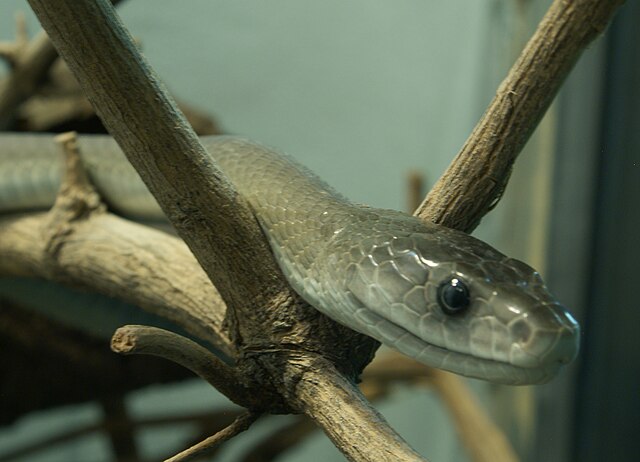
15 Little-Known Facts About Black Mambas
The black mamba, a sleek and venomous snake native to sub-Saharan Africa, derives its name from the Zulu word imbamba.Related to cobras and three other mamba species, the black mamba is distinct from its tree-dwelling, green-colored relatives. Despite their potent venom, the other mambas are more timid and lack the black mamba's deadly reputation.
These long-lived snakes inhabit grasslands, forests, and savannas with ample hiding spots.
The black mamba is a feared, awe-inspiring, and often misunderstood creature with many little-known facts surrounding its existence.
Here are 15 facts about these fascinating creatures. Wikimedia/TimVickers
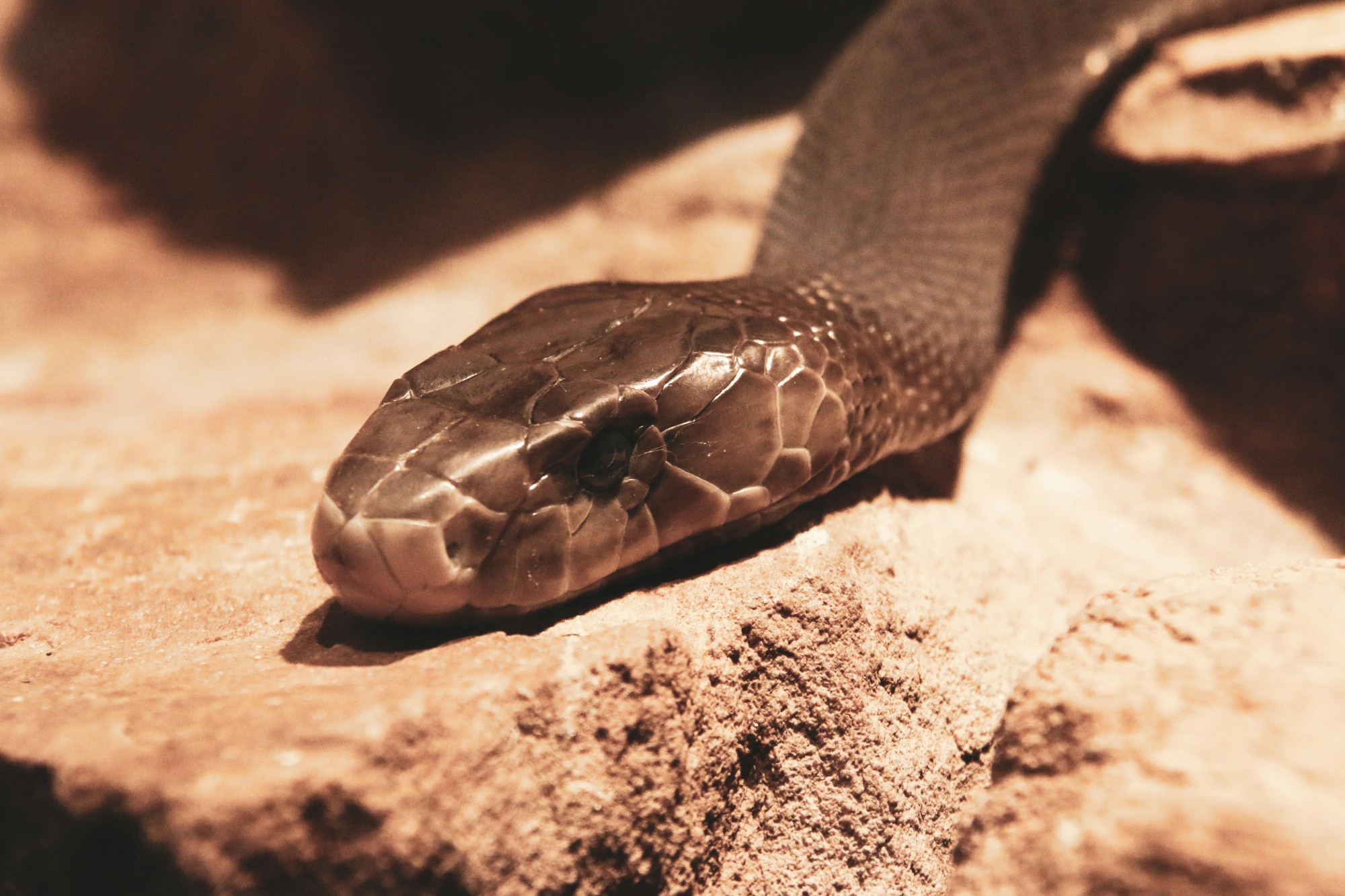
1. Black Mambas Are Actually Brown
Despite their name, black mambas are not black in color. Their bodies range from light tan to dark brown, with young snakes being slightly darker.The "black" refers to the color inside their mouths, which serves as a warning sign to potential threats when the snake feels endangered. Glen Carrie on Unsplash
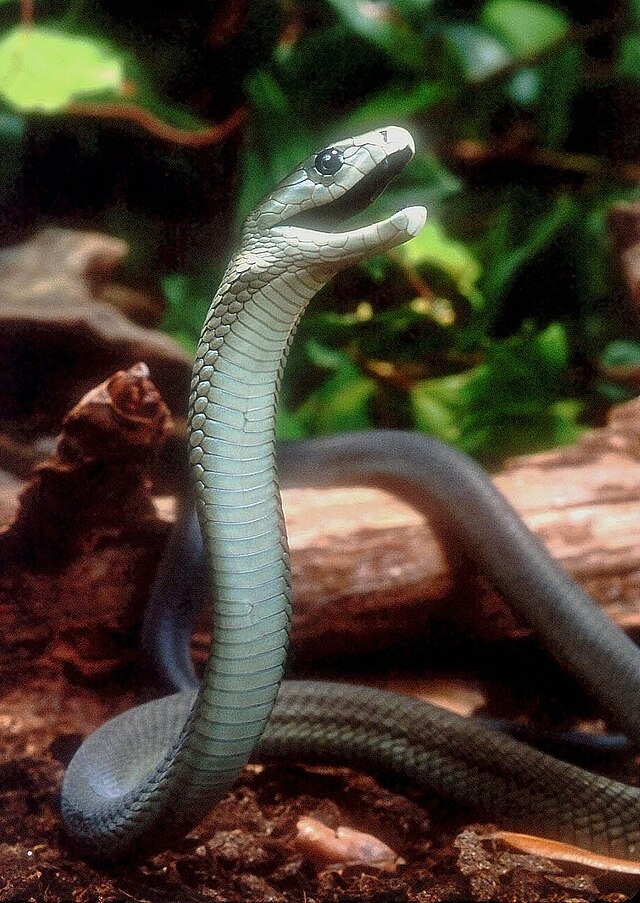
2. Black Mambas Are Not The Most Venomous or Deadliest, But Considered The Most Dangerous In The World
While not the most venomous or deadliest, black mambas are considered the most dangerous snakes due to their size, aggression, speed, and the rapid onset of symptoms following a bite.They have a 100% envenomation rate, can bite from a distance, and often strike multiple times, requiring massive doses of antivenom. Wikimedia/Bill Love/Blue Chameleon Ventures

3. Black Mambas Can Move Up To 12 MPH
Black mambas are the world's fastest snakes, capable of slithering at speeds up to 12 mph on smooth surfaces and swimming with ease.Although they occasionally climb trees, they usually only attack when threatened, cornered, or provoked, preferring to escape rather than engage in confrontation. Wikimedia/TimVickers
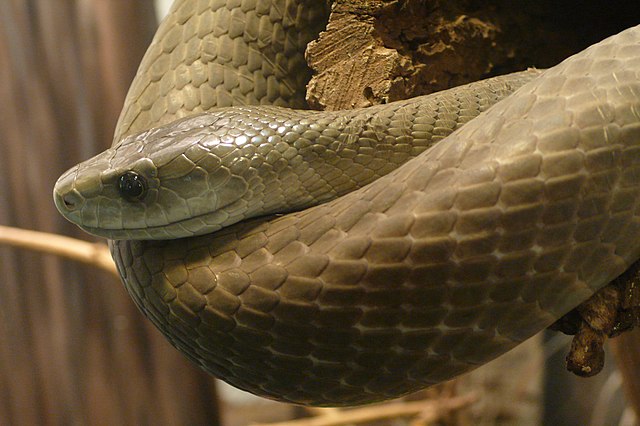
4. A Black Mamba's Bite Is Known As "The Kiss Of Death"
Black mambas are feared and respected in Africa, with their bite known as "the kiss of death."Their neurotoxic venom can kill a human with just two drops, causing convulsions, respiratory failure, and coma within minutes. Anti-venom treatment is available but must be administered quickly. Wikimedia/TimVickers
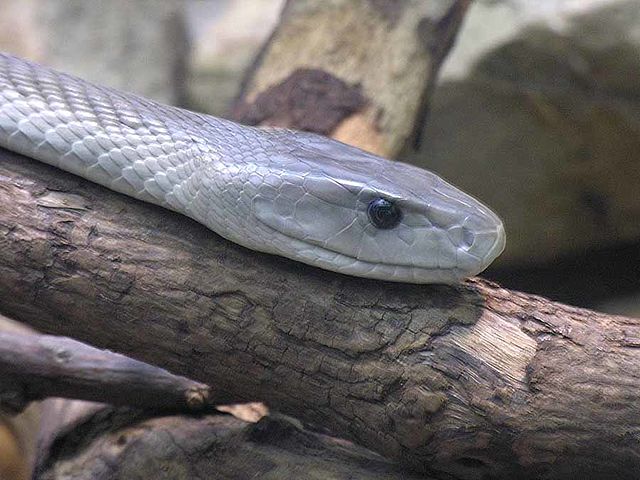
5. Black Mambas Are Daytime Hunters
As cold-blooded creatures, black mambas are active during the day, basking in the sun to regulate their body temperature.They are patient hunters with excellent vision and sense of smell, traveling several miles a day during mating season to locate potential mates. Wikimedia/Dick Culbert
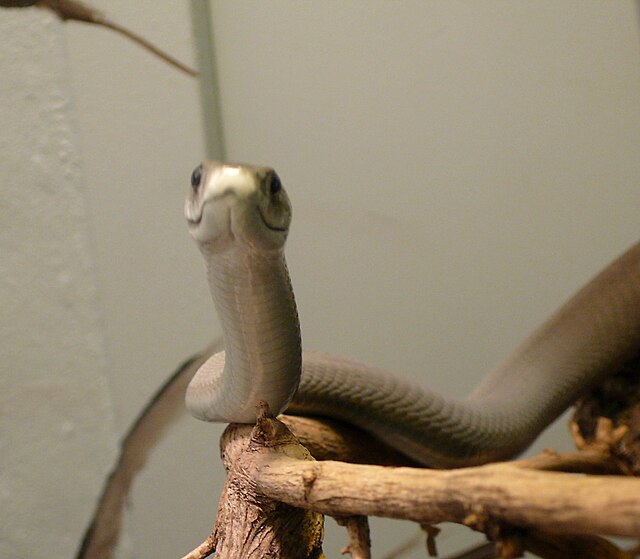
6. Black Mamba Females Lay Up To 20 Eggs At Once
During the spring breeding season, male black mambas compete for females, following scent trails for miles.After mating, females lay up to 20 eggs in a safe location, which hatch after three months. Baby mambas are born with poisonous venom and can fend for themselves immediately. Wikimedia/TimVickers
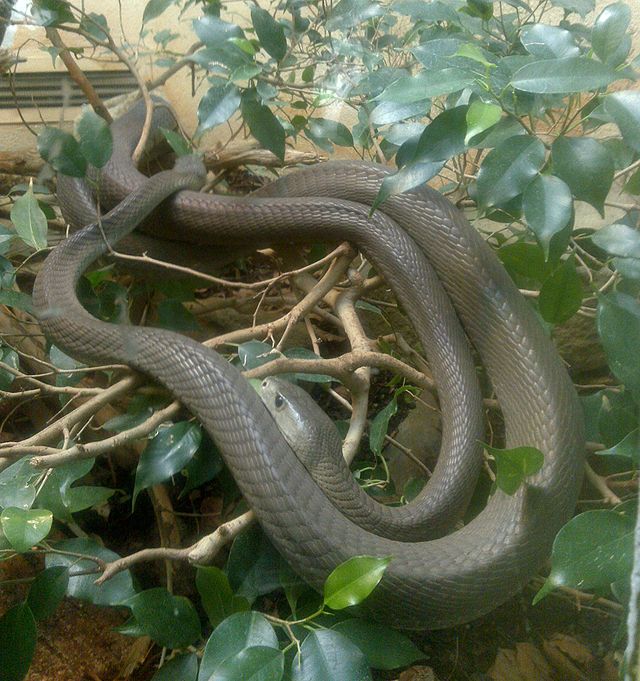
7. Black Mambas Have The Longest Fangs Of Elapid Snakes
Black mambas have the longest fangs among elapid snakes, measuring 0.5-1 inch in length. Located at the front of the upper jaw, these hollow fangs deliver neurotoxic venom.Their flexible jaws can dislocate to accommodate prey up to four times the size of their head. Wikimedia/Bjoertvedt
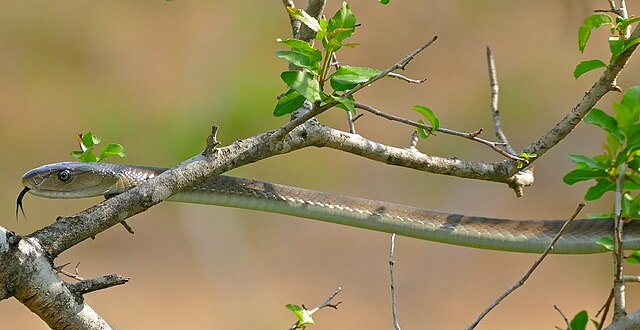
8. Black Mambas Aren't Tree Dwellers
Unlike other mamba species, black mambas are terrestrial, preferring underground or covered lairs for sleeping. They seek shelter in rocks, fallen trees, shrubs, and dense vegetation, sometimes occupying abandoned termite mounds.During the day, they leave their lairs to hunt, returning by dusk for safety and camouflage. Wikimedia/Bernard DUPONT
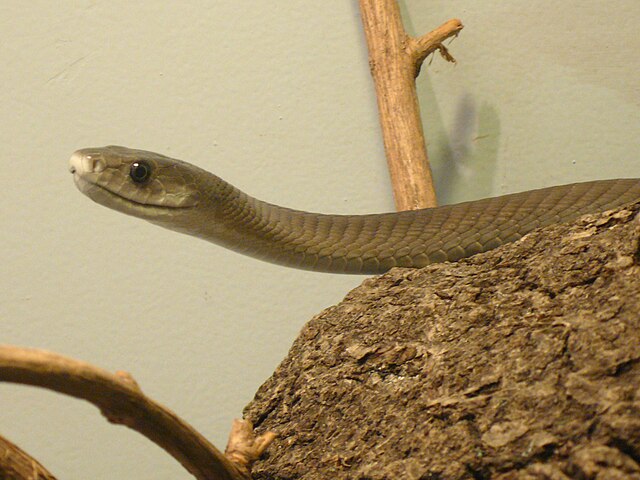
9. Black Mambas Are Carnivores
Black mambas primarily prey on small birds and bats, occasionally tackling larger vertebrates like rock hyraxes.Their potent venom is an adaptation to quickly disable prey, minimize struggle, and avoid attracting meal-stealing predators. Researchers are still unraveling the complexities and diversity of snake venoms. Wikimedia/TimVickers
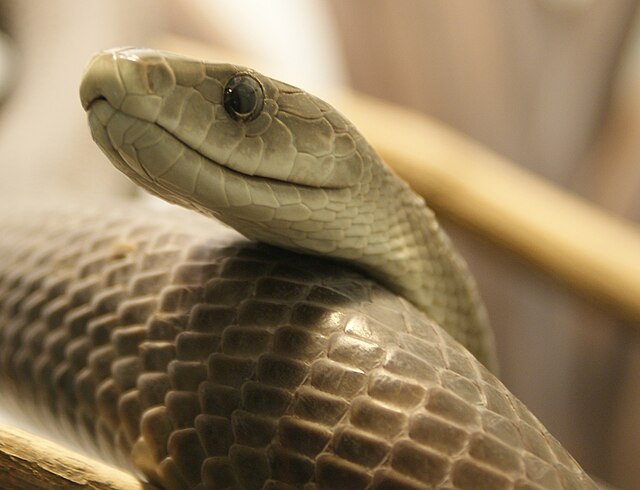
10. Black Mambas Can Grow to 14 Feet in Length
As Africa's longest venomous snake species, black mambas typically reach 6-9 feet in length, with some reports of 14-foot individuals.They are strong and capable of holding their own against much larger animals, despite not using constriction to subdue prey. Wikimedia/TimVickers

11. Black Mambas Can Paralyze And Kill Humans
Black mamba venom interferes with nerve-muscle communication, causing paralysis and ultimately shutting down the heart. Symptoms progress rapidly from swelling and pain at the bite site to dizziness, facial and tongue miscoordination, slurred speech, and blurred vision. Without antivenom, paralysis and death are likely within 20-45 minutes. Wikimedia/Bernard DUPONT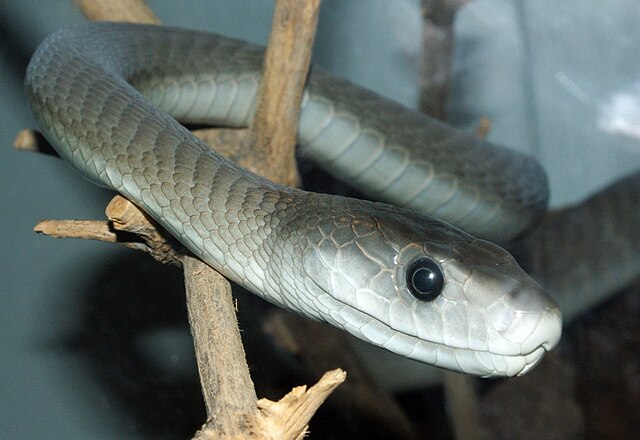
12. Black Mamba Venom Is Being Tested As A Non-Addictive Painkiller
Despite its deadly effects, black mamba venom contains compounds with potential medicinal applications.Scientists are investigating a specific compound that may serve as a non-addictive painkiller, highlighting the complexity and diversity of snake venoms. Wikimedia/TimVickers
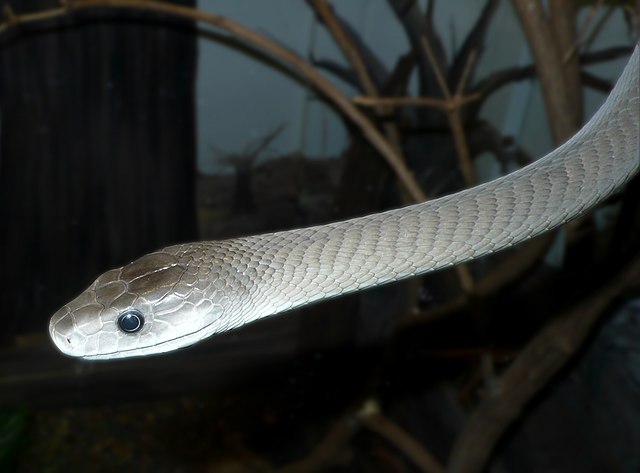
13. There Are Other Kinds Of Mambas
The Dendroaspis genus includes three other mamba species: the eastern green mamba, Jameson's mamba, and western green mamba.Unlike the black mamba, these snakes are arboreal and considerably less deadly, though still venomous. Wikimedia/TimVickers
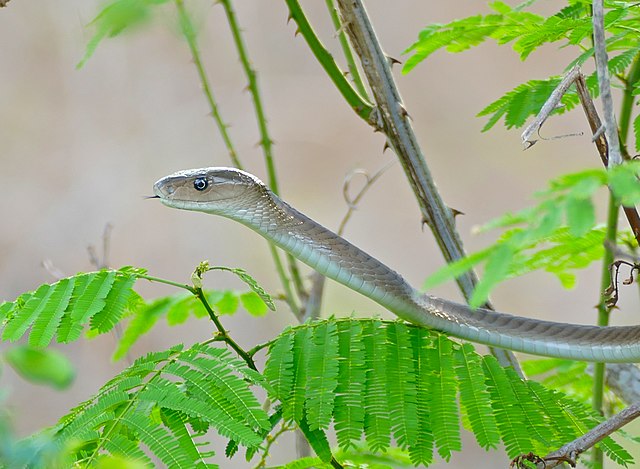
14. The Mongoose Is The Black Mamba's Nemesis
The mongoose, with its sharp teeth, speed, and agility, is a notorious snake killer.Having evolved immunity to black mamba venom, mongooses can outmaneuver and kill these snakes. Wikimedia/Bernard DUPONT
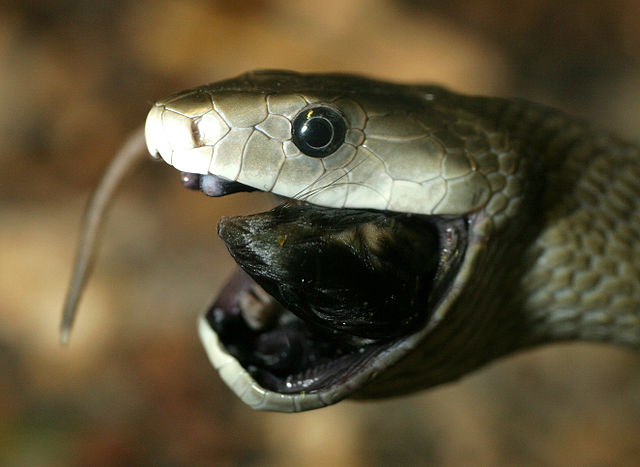
15. How Many Humans Are Killed By Black Mambas Annually?
Despite their aggressive reputation, black mambas are generally shy and prefer to escape threats using their incredible speed.However, if cornered or disturbed, they may become defensive and strike repeatedly. While their venom is extremely toxic, they are responsible for only a small number of human deaths annually.
(This content was created with the help of AI, and edited by a human.) Wikimedia/Tad Arensmeier